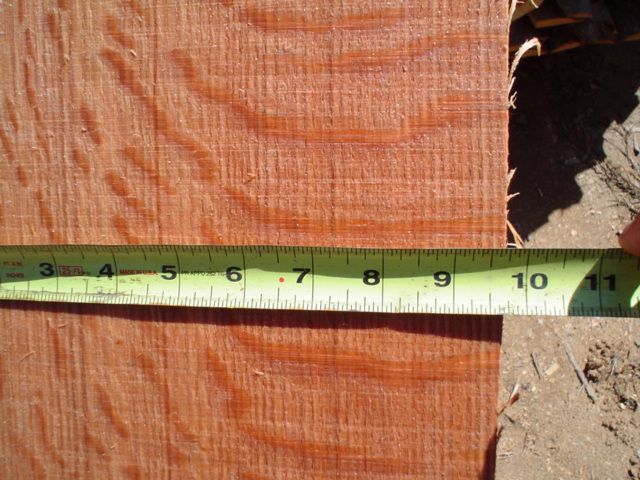What Size Log is Worth Quartersawing?
Thoughts on the practicality of getting useful yield when quartersawing logs. October 3, 2009
Question
I want to quartersaw some white oak. What is the minimum sized log that you might consider trying to quartersaw? I realize larger logs are ideal; just wondering at what size quatersawing is feasible.
Forum Responses
(Sawing and Drying Forum)
From contributor A:
I have found that anything less than 16 inches does not produce enough to really make it worth the effort. A log that size will just make 8 good 6 inch wide boards. The rest is really too narrow. Yes, I know that you can sell 4 inch wide qs boards, but with smaller logs your waste factor runs higher than on the larger ones.

Click here for higher quality, full size image
From Professor Gene Wengert, forum technical advisor:
I agree with contributor A and would add that smaller logs tend to develop a lot of low grade q-sawn (the knots tend to be in the center portion of the log so will be along one side of q-sawn lumber from small logs), which can be very difficult to sell or use.
Incidentally, "Sawmill & Woodlot" had a nice article on q-sawing this past month.
From contributor G:
I agree with the 16" limit; bigger and less taper are the way to go. I read your article, Gene, and I have two questions for you: do you have an image that demonstrates holding a quarter of a log on a saw as illustrated in fig 3 pg 34? Why quartersaw only for figure? The stability of QS seems to have advantages when building furniture.
On another note, alternate face quartersawing works quite efficiently for me on a band mill - each board is edged one side, and edging the other side is done quite easily having already established one straight edge.
From contributor L:
I am a custom cabinetmaker, and I agree - why QS just for figure? Poplar is great for paint grade, but leave it laying around for a while and it twists. I don't think this would happen if it was QS. I spend too much time going through wood looking for straight lumber. I am considering buying a small mill and kiln and sawing my own. I think doors of all sizes, both cabinet and full size interior doors, should have quartered rails and stiles with plain sawn panels. This is a really nice look; it sets the panel off. Gene, do all the woods stay true if QS?
From Professor Gene Wengert, forum technical advisor:
QS will twist as much as flatsawn, but it will not cup. QS shrinks half as much as FS in width, but twice as much in thickness. QS will have side bend, which is rare in true FS. However, due to the knots being in the center of the tree, which is where we get the shrinkage lengthwise, clear QS has little sidebend.
When sawing, if we first split the log to determine the grain direction (including any twisted grain) and then saw parallel to the split (which is parallel to the grain), the QS lumber will be extremely stable. In fact, expensive pool cues, because they cannot warp at all, will be made this way.
